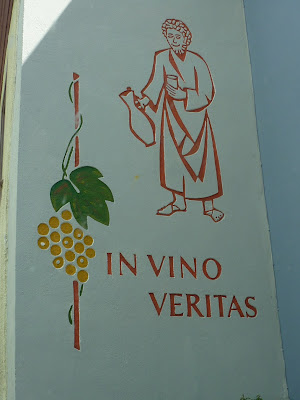Why Aachen? you ask. Several reasons. Aachen (aka Aix-la-Chappelle) was Charlemagne's capital; the "father of Europe," he who battled the Moors in Spain and who conquered and unified much of Europe late in the 8th century. The Aachen cathedral is also the oldest around in this part of the world, dating from 800, and it is widely regarded as the beginning of truly European art and architecture; the Carolingian Renaissance. Its central structure was Charlemagne's royal chapel, copied very closely on what he and his artistic advisors had seen at San Vitale in Ravenna. So we had to see it.
 |
But first, Aachen's Rathaus...
|
 |
The right tower of which is thought to have included (up to
13m), part of Charlemagne's great hall and throne room
|
 |
The cathedral itself, although relatively small, is difficult to
see and photograph |
 |
In a 2009 excavation, two large wooden pegs were found in
the cathedral's foundations; dendrochronology showed them
to be from c. 781
|
 |
Later Medieval windows near the altar
|
 |
Altar; lots of gold; Pantokrator and 4 evangelists
|
 |
Mosaic over the altar area; no Pantokrator!
|
 |
More mosaic designs; no Bible stories going on here; could
just as well be Islamic... |
 |
This mosaic by the entrance was of great interest...Roman-
looking figures, all of them Roman river gods...Tigris,
Eurphrates, etc.
|
 |
Pulpit of Emperor Henry II; (looks gold but is
actually copper); 13th |
 |
12th century chandelier, a gift of Frederick Barbarossa, whose
coronation occurred in Aachen, as did those of most of the
Holy Roman Emperors
|
 |
In the narthex, a She-wolf, 2nd century
|










































